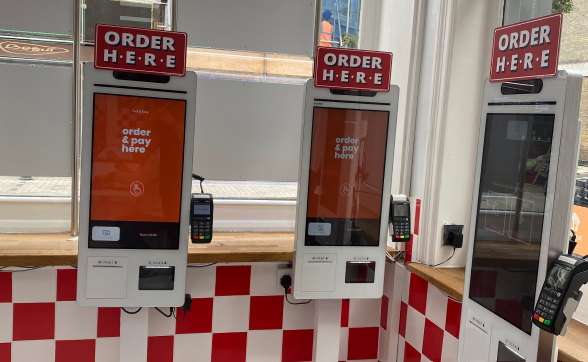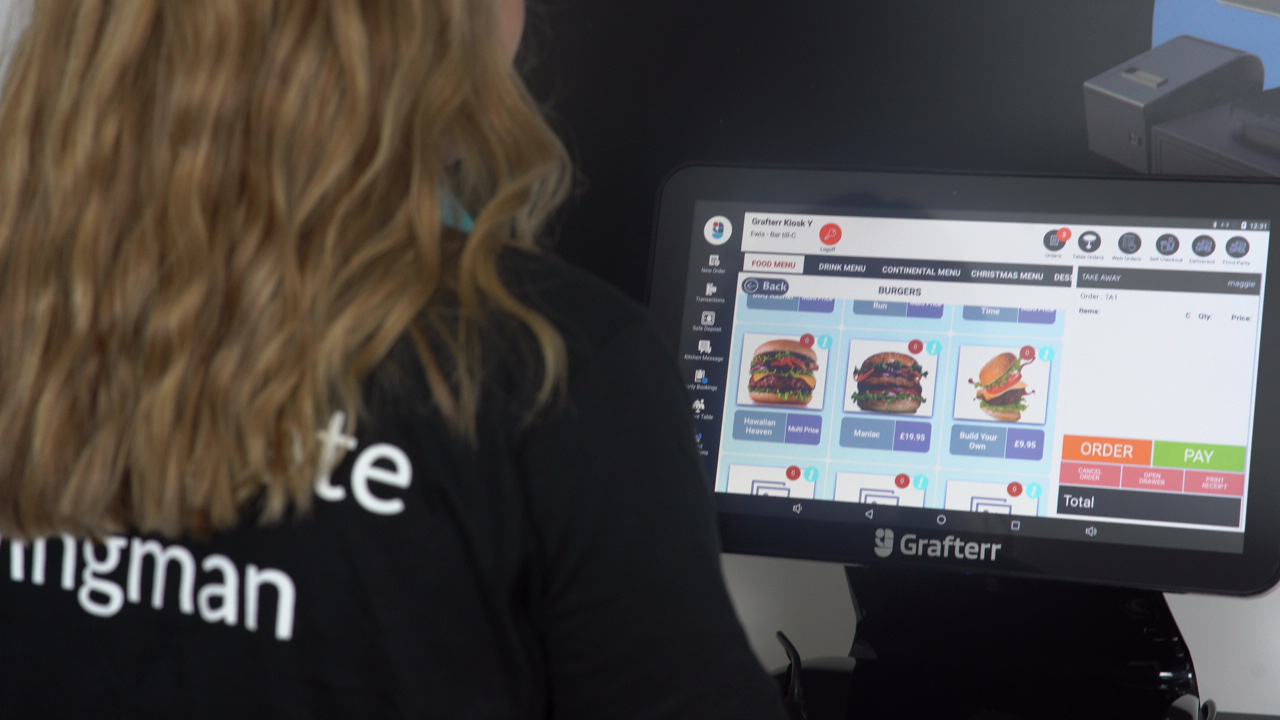Customer satisfaction is the key objective of any organization. If you own a restaurant, guest house, or retail store, prioritizing client pleasure by providing top-notch services is the key to keeping your business running and achieving success. If your consumers are satisfied, they will return for more, which will ultimately increase your revenue. A practical step towards achieving this is by deploying self-serving kiosks.
Self-serving kiosks have been a pillar for years and have grown in popularity across virtually every sector. This technology has indeed become pivotal within the food industry standard, offering an enhanced level of service to customers. In restaurants and the hospitality sector, this technology enables guests to place their orders efficiently without requiring server assistance. They are frequently utilized in fast-paced industries where keeping pace with demand is essential.
The hospitality industry requires a lot of management to run efficiently. While there are numerous tasks involved in running a successful hospitality business, it is important to ensure that all the hospitality sector processes are automated as much as possible, making self-serving kiosks extremely beneficial. In this article, you will get a strategic guide to a few ways to increase your business with the help of self-help kiosks.
What exactly is a Self-service kiosk?

A self-service kiosk can be described as an interactive touchscreen gadget that provides customers with the autonomy to procure goods or services without the assistance of a staff member. Its components consist of software and hardware features enabling clients to independently explore options, place transactions, and make payments.
The hardware component is a screen device mounted to surfaces, mainly walls, counter tops, or standing pedestals, while the software component is a kiosk program that allows you to create a custom ordering workflow for your company. An example of a self-serving kiosk is a mounted point-of-sale (POS) system that empowers customers to check out independently in a retail store or restaurant.
Self-serving kiosks offer clients a one-of-a-kind interactive buying experience, allowing them to browse, find, and purchase products in a way that expedites, smooths, and enhances their shopping experience.
Benefits of self-serving kiosks
In today’s swiftly evolving commercial landscape, staying competitive and maximizing returns is the key to long-lasting achievement. Self-serving kiosks have emerged as invaluable assets for UK businesses to enhance customer experience, increase operational efficiency, and boost revenue. Here are some benefits of using self-serving Kiosks for your hospitality industry business:
Improves customer experience
Kiosks are wonderful for increasing your hospitality revenue because they allow customers to receive exactly what they want and when they want it. This saves time when ordering food and makes it easier for chefs to track orders. Customers can also order food at a significantly lower cost than standing in line at the cashier’s station.
Self-serving kiosks eliminate the need to wait for the waiter to place orders. This sophisticated equipment can handle all orders and payments, allowing customers to relax and wait for their food rather than waiting at the counter to order or make payments. This will improve the customer experience and increase revenue as they will want to visit again.

Increased operational efficiency
One of the benefits of kiosks is that they allow operators to effectively outsource order-taking to their clients. UK Businesses can improve their operations and dedicate staff to more vital duties by shifting ordinary work to self-service kiosks. With self-serving kiosk handling tasks such as checkouts, information searching, and registrations, industries can expedite procedures, decrease bottlenecks, and enhance overall productivity. This saves time, lowers labor expenses, and allows personnel to focus on providing higher-value services like specialized support or problem-solving.
Improve order accuracy
With the customer in control of entering their order, there is less chance of cashiers misinterpreting an order, lowering the overall margin for error. This is crucial for clients who have allergies.

Increased sales and revenue
Self-service kiosks have the ability to dramatically impact sales by creating options for upselling and cross-selling. By integrating targeted prompts or suggestive selling strategies into the self-service kiosk interface, UK businesses can encourage clients to investigate new items or services. These autonomous kiosks work as proficient assistants in selling goods by leveraging data-informed endorsements alongside captivating visuals that fuel consumer buying behavior.
Grafter’s self-serving kiosk solution
At Grafterr, we are fully aware of the distinct requirements within the hospitality sector. Thus, our top-notch self-serving kiosk systems transform how businesses operate in the UK landscape. All facets of hospitality industries can take full potential of Grafter’s self-serving kiosk, which allows you to cut costs, automate customer orders, and increase sales and revenue. Our kiosks are entirely customizable, with a wide selection of color, design, payment, and setup options to guarantee they are a real extension of your brand.
Features of Grafter’s self-serving kiosk
Grafterr self-serving kiosks have various characteristics that make them simple to use for customers. Some aspects that contribute to user-friendliness are as follows:
User-friendly interface.
The self-serving kiosks provided by Grafter propose an uncomplicated and intuitive user interface design that’s a breeze to manipulate. The display showcases comprehensible and visually appealing choices, facilitating consumers in picking their preferred items with ease.
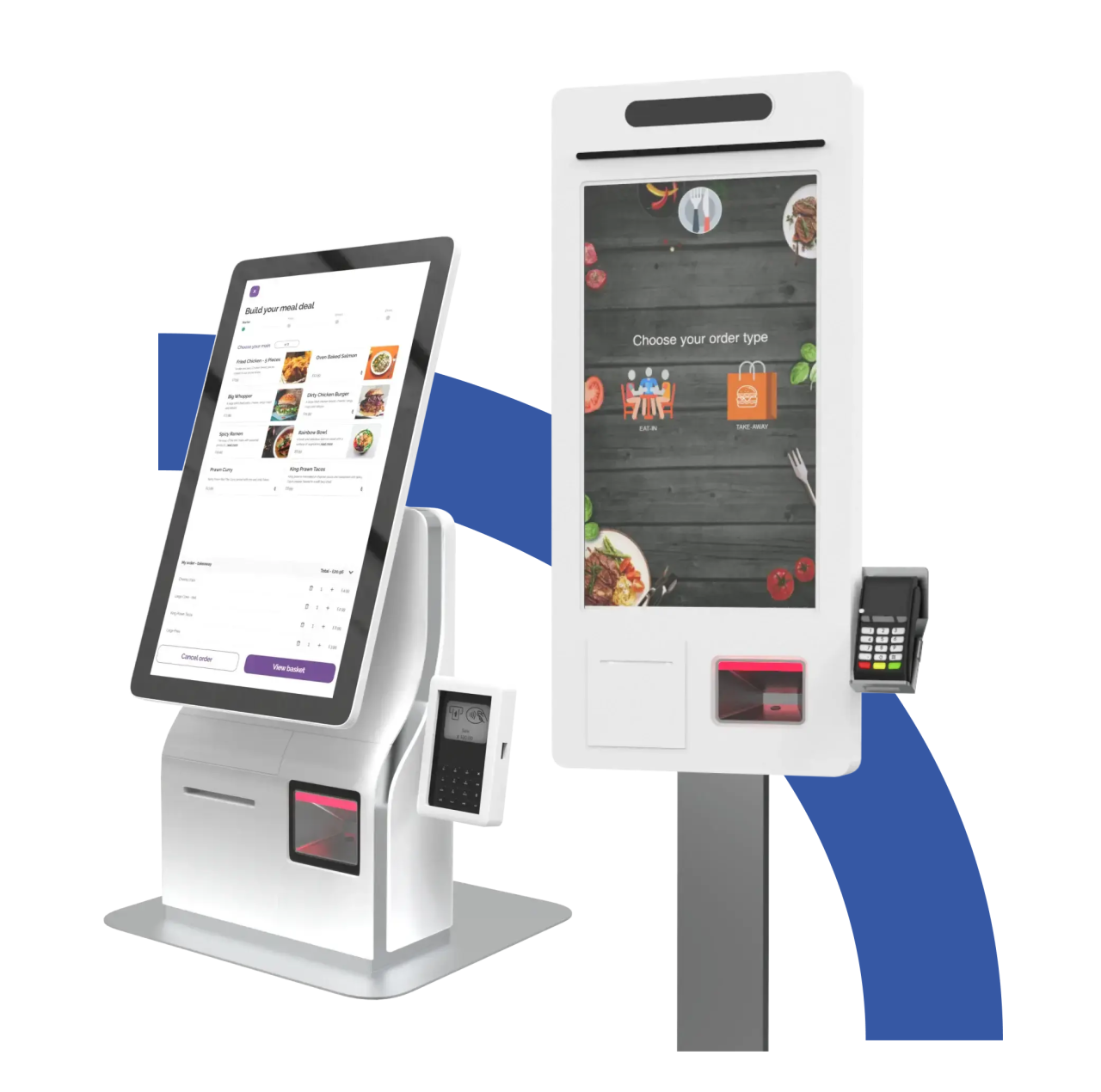
Personalized options
Grafter’s self-serving kiosks provide an abundance of personalization options, enabling shoppers to customize their buys. These available choices are distinctly showcased on the screen, allowing customers to adjust their food orders according to desired taste.
Payment versatility
The kiosks are capable of accepting multiple forms of payment, ranging from cash and credit cards to mobile transactions. This versatility caters to diverse customer preferences while expediting the billing procedure.
Touchscreen capabilities
The kiosks use touchscreen technology, which most people are familiar with and require no effort to operate. Just like handling their smartphone or tablet, customers can browse through choices by just tapping or swiping on the screen.
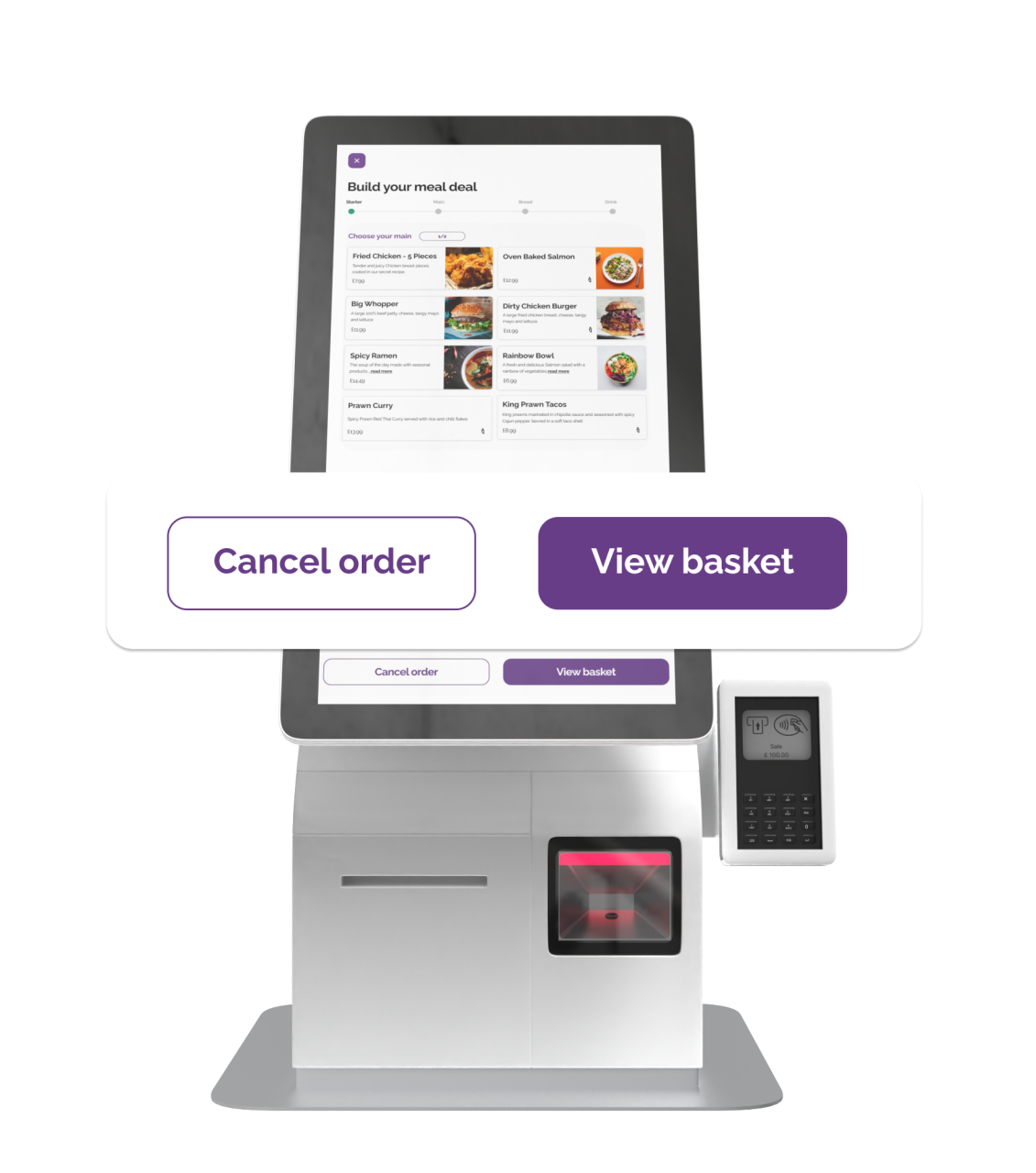
Upselling and cross selling
Grafter’s self-serving kiosks give clear and succinct instructions to guide customers through the ordering procedure. Whether selecting a menu item, tweaking choices, or adding extras, the kiosk prompts visitors with step-by-step directions, assuring a seamless and error-free ordering experience.
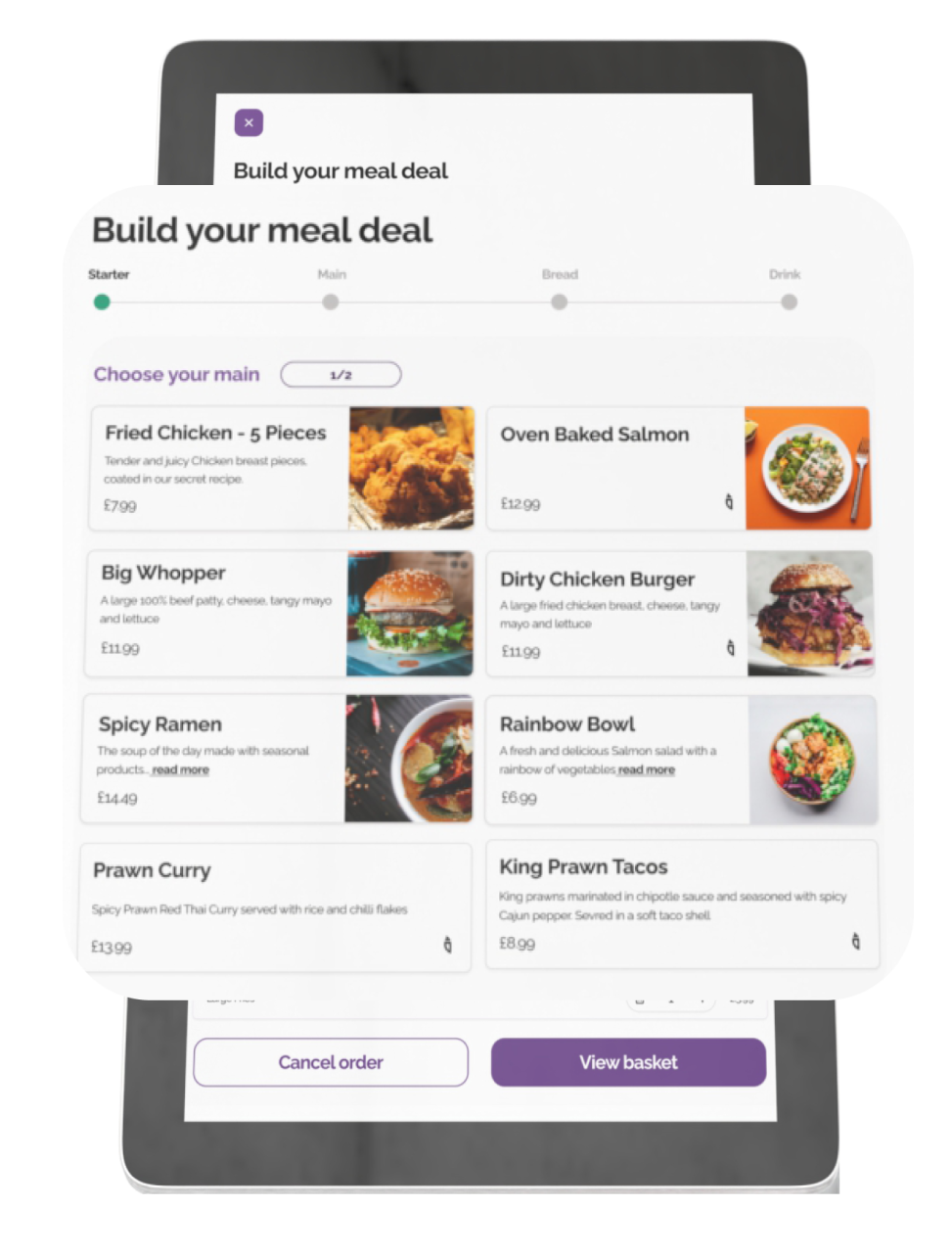
Steps to implement self-serving kiosk
Here are some actionable insights into how UK businesses can strategically implement self-serving kiosks:
Understand your need
The first step to implementing a self-serving kiosk is to understand your needs. Don’t just acquire a kiosk because your competitor down the street does. Consider why you need one. Examine the current business model and evaluate how a self-serving kiosk could improve it. What are the commercial objectives of the restaurant? How will a kiosk increase profitability and service quality? What should be available there? These are the questions that every owner should ask before investing.
Choose the best POS system.
The next stage is to conduct research. Now that you have a plan and are happy with where you want to start, it’s time to delve into the self-serving kiosk business. Whether you’re thinking of beginning with a number of kiosks or upgrading your entire POS system, make sure to do your research to select the right provider to meet your needs.
Incorporate self-serving kiosks into the omni-channel experience
Now that you’ve chosen a provider to handle your kiosk needs, the next step is incorporating the self-serving kiosk into the Omni-channel experience. It offers numerous options for customers to order and pay for things.
The ordering experience should be varied at all kiosks. In other words, if a customer forgets his or her credit card, they can pay with cash. They can also pay with a card if they forget their cash. Make it as easy for any customer to spend money as feasible.
Select the right Locations for self-serving kiosks.
The location of your kiosk is nearly as crucial as its functioning. It must be in a strategic location that is both accessible and out of the way. It cannot produce crowds that obstruct employee work or consumer access. At the same time, it cannot be hidden in a corner. They should be kept separate from the registers to avoid interfering with customer lines.
Conclusion
Self-service kiosks have become essential for businesses of all sizes, providing an efficient and personalized customer experience. With a user-friendly interface, flexible features, and benefits like increased sales and operational efficiency, self-serving kiosks continue to alter how customers interact with businesses and benefits such as greater efficiency and sales. The hospitality industry that embraces this technology can meet the growing need for self-service solutions while also gaining a competitive advantage in today’s technological landscape.
